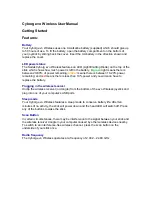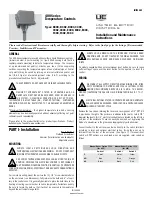
18
9.2.2 Fail to open actuator
9.2.2.1 Setting of the ‘open valve’ position (see Figure 7)
Adjust the stop bolt actuator, as follows:
• Check where the actuator angular stroke stops. It should
stop right at the fully open position of the valve.
• To change the stop position:
-
Simply loosen the lock nut
(2)
.
-
Pressurise the actuator until the stop bolt
(1)
turns
freely, without any counter-pressure.
-
If the actuator did not reach the fully opened position,
adjust the stop bolt
(1)
anti-clockwise.
-
If the actuator stopped beyond the fully opened
position, adjust the stop bolt
(1)
clockwise.
-
Verify the newly obtained angular position with one
opening stroke.
-
Repeat this operation until the desired angle is
obtained.
• Hold the stop bolt
(1)
with a wrench and tighten the
lock nut
(2)
. Ensure the washer
(3)
and the under seal is
properly placed.
9.2.2.2 Setting of the ‘close valve’ position (see Figure 7)
Adjust the stop bolt actuator, as follows:
• Pressurise the actuator until the actuator reaches the fully
closed position.
• Check where the actuator angular stroke stops. It should
stop right at the fully closed position of the valve.
• To change the stop position:
-
Depressurise the actuator.
-
Simply loosen the lock nut
(2)
.
If the actuator did not reach the fully closed position,
adjust the stop bolt
(1)
anti-clockwise.
If the actuator stopped beyond the fully opened
position, adjust the stop bolt (1) clockwise.
Verify the newly obtained angular position with one
closing stroke.
Repeat this operation until the desired angle is
obtained.
• Hold the stop bol
(1)
with a wrench and tighten the
lock nut
(2)
. Ensure the washer
(3)
and the under seal is
properly placed.
9.2.3 Fail to close actuator (see Figure 7)
• Actuators also available to order as fail to close. Refer
to section 9.3 simply reversing the ‘open’ and ‘close’
instructions
Operation and Use











































